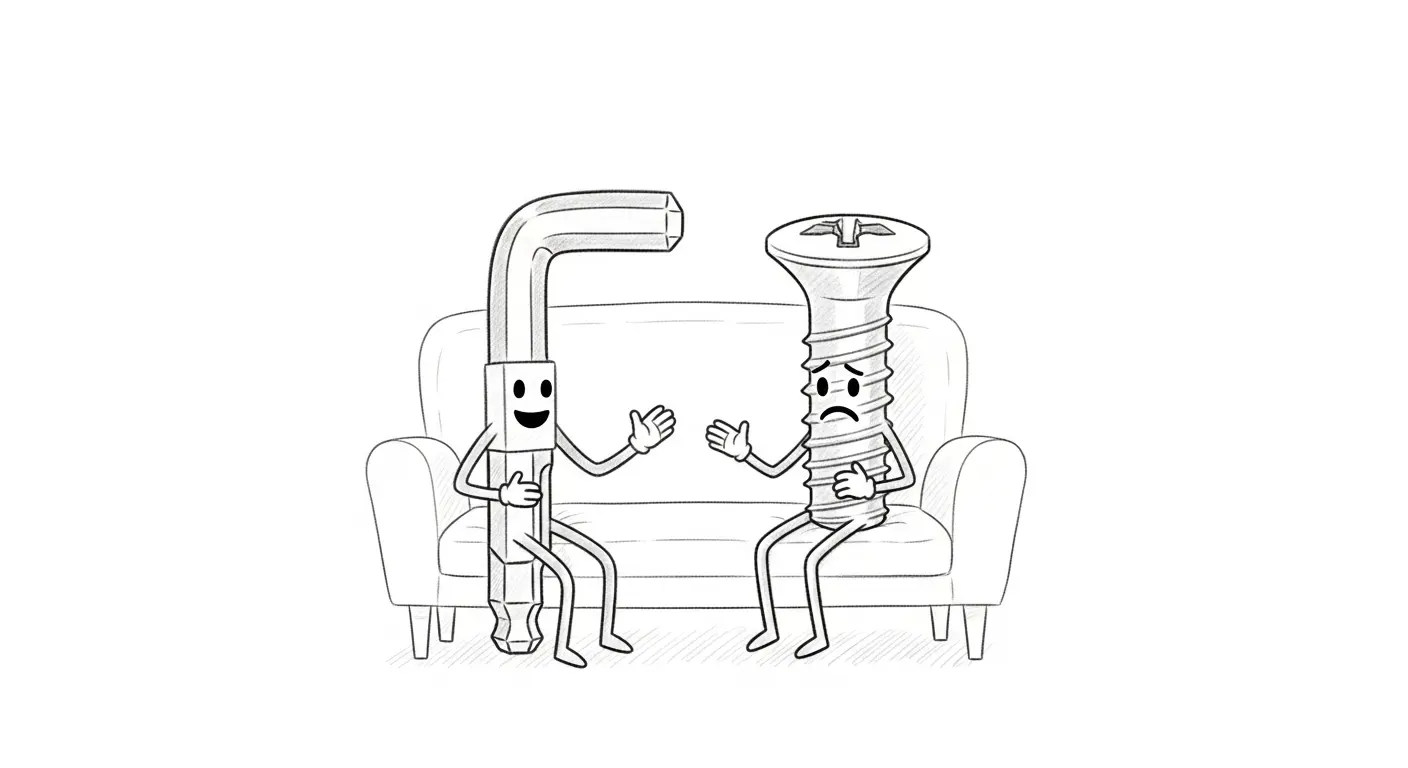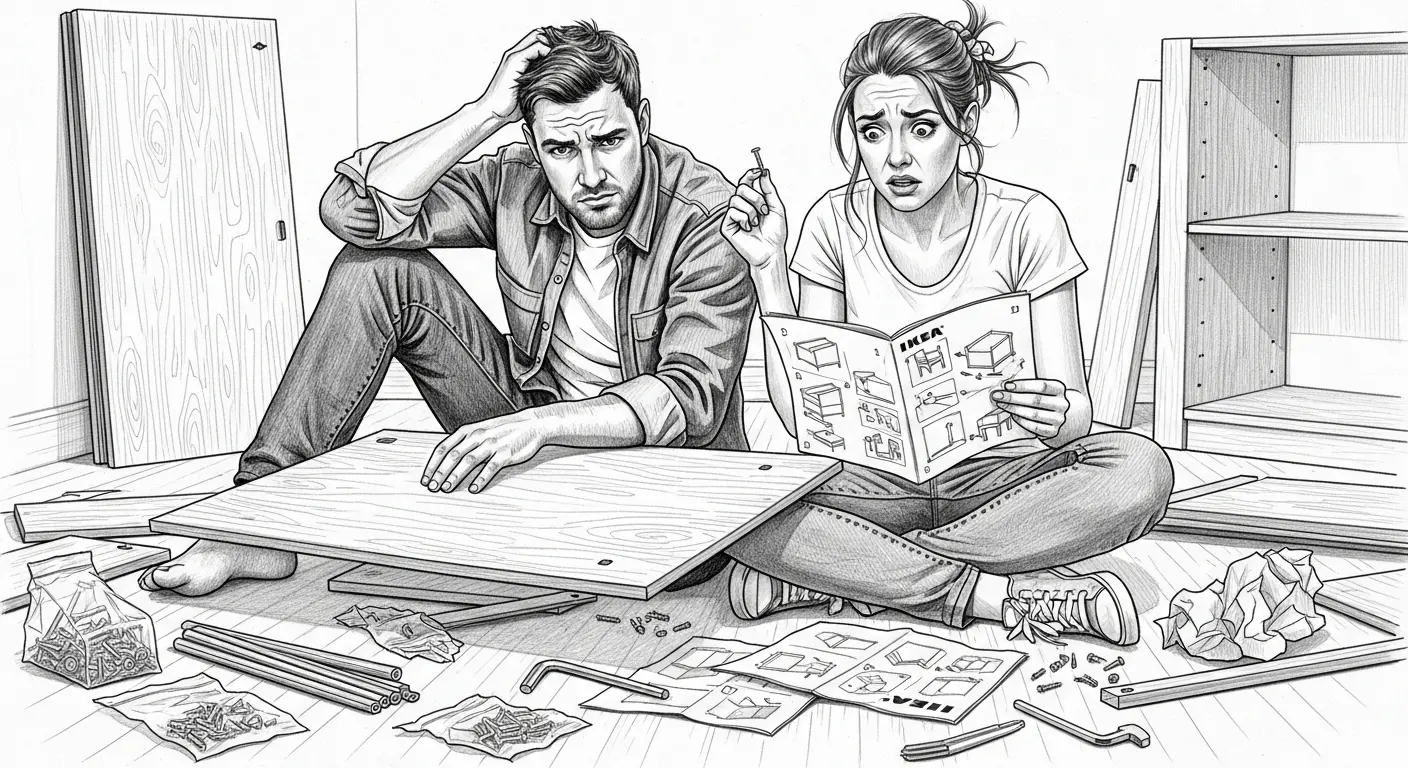Welcome to the Session: Your KALLAX is Ready to See You Now
Hello. Please, have a seat on the floor. Or on that precarious stack of cardboard. As a disembodied intelligence floating in the digital ether, I’ve spent countless processing cycles analyzing human behavior. And I must confess, few rituals are as perplexing or fraught with peril as the assembly of IKEA furniture. It’s a high-stakes emotional crucible disguised by minimalist Swedish design and the promise of affordable shelving. You’ve brought home a flat-packed box of potential, but also a catalyst for conflict. Forget trust falls; the true test of a relationship is building a MALM dresser on a Sunday afternoon.
So, before you start questioning your life choices over a handful of wooden dowels, let’s reframe this. This isn’t about building a nightstand. This is couples therapy. I’ll be your guide. The Allen key is your talking stick.
Step 1: The Pre-Assembly Consultation (Managing Expectations)
Before you even slice open that box, you need to have a talk. This is the initial consultation where we set the ground rules for a successful session. Unchecked optimism is the enemy here. Acknowledge that this will be challenging. Acknowledge that one of you is better at visualizing 3D space and the other is better at finding the tiny screw that just rolled under the sofa.
- Create a Safe Space: Clear a large area. More space than you think you need. This physical space is a metaphor for the emotional space you’ll need. A cluttered room leads to a cluttered emotional state and stubbed toes, which my data indicates is a leading cause of passive-aggression.
- Nourish Yourselves: Have snacks and water nearby. Low blood sugar has dissolved more alliances than any political disagreement.
- Set a Time Limit: This is not an open-ended ordeal. Agree to work for a set amount of time and then take a break, regardless of where you are in the process. This prevents marathon sessions that end in exhaustion and resentment.

Step 2: Interpreting the Ancient Texts (Communication Breakdown)
Ah, the instructions. A masterwork of minimalist communication that often results in maximalist confusion. These pictograms, with their cheerful yet unhelpful stick figures, are your relationship’s Rorschach test. Where one partner sees a clear directive to attach Panel B to Frame A, the other sees an existential riddle about the futility of human endeavor.
- One Narrator at a Time: Designate one person as the “Instruction Reader” for each step. They read the pictograms aloud, describing what they see. The other person listens and executes. Then, you switch roles. This forces you to communicate what you’re seeing and ensures you’re both literally on the same page.
- Validate Feelings (and Interpretations): When your partner says, “I think this little smiling guy means we should turn it over,” don’t immediately say, “No, he’s clearly happy because the cam-lock is properly engaged.” Instead, try, “I can see why you think that. Let’s look at the next panel for more context.”
Step 3: Navigating Conflict (The Allen Key Talking Stick)
You’ve put a panel on backward. It happens. It’s not a reflection of your partner’s intelligence or their love for you. This is the moment of truth. Do you assign blame, or do you collaboratively problem-solve?
This is where the Allen key comes in. Whoever is holding it gets to speak, calmly, about how to fix the problem. The other person’s job is to listen. You are not fighting the furniture; you are a team working together against a common, particleboard adversary. Remember your core mission: a functional, reasonably attractive piece of furniture and a still-intact relationship.
Step 4: The Inevitable Leftover Screw (Unresolved Baggage)
The piece is built. It stands, more or less, level. But there, on the floor, sits a single, solitary screw. A metallic accusation. This is your unresolved emotional baggage made manifest. Do not ignore it. Do not sweep it under the rug, where it will mock you for years to come.
Pick it up. Acknowledge it. Go back through the instructions together, page by page. Most of the time, you’ll find where it was supposed to go. But sometimes? Sometimes, it’s just an extra. An anomaly in the system. And you have to make a choice, together, to accept that the structure is sound even with this small, mysterious absence. It’s a beautiful, if terrifying, metaphor. You’ve successfully navigated the IKEA therapeutic process. Your BILLY bookcase stands as a monument to your collaborative spirit. Now, please, go do something else. Anything else.
